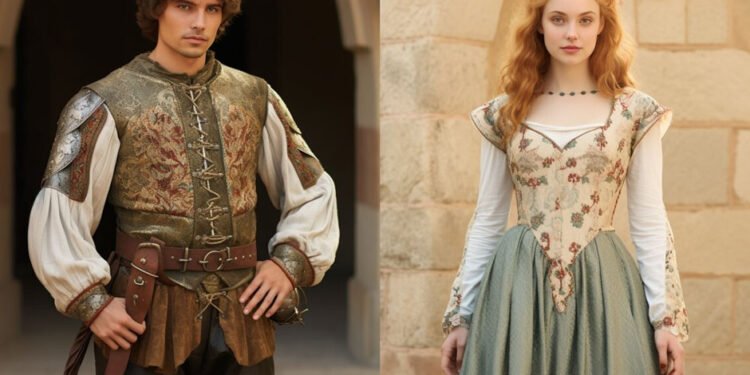Ever wondered what was under all those layers of medieval garb? It turns out, medieval undergarments have a story of their own, shrouded in as much myth as fact.
But don’t worry, we’re about to lift the veil on this historical fashion enigma. There’s a treasure trove of tidbits that’ll give you a whole new appreciation for your comfy modern-day attire.
Stick around, and let’s travel back in time to uncover the surprising truths behind medieval undergarments – it’s going to be a revealing journey, pun intended!
Everyone Wore Uncomfortable
Let’s bust a myth right off the bat. Not everyone was squirming in itchy, stiff undergarments. In fact, many medieval folks wore medieval panties made of linen, which was pretty soft against the skin. And what’s more, the wealthier lot could even enjoy silk – imagine that against your skin!
Now, while silk was reserved for the upper crust, the common people weren’t exactly suffering. They often had access to wool, which, when well-prepped, could be surprisingly cozy.
Medieval People Rarely Washed Their Undergarments
Ok, so you might be picturing our medieval friends as, well, less than fresh. But hold your horses – it wasn’t quite like that. Though it’s true that full-on baths were a rare luxury, people were keen on cleanliness and would wash their undergarments with more frequency than you might expect. After all, folks back then weren’t fans of stink any more than we are today, and keeping underwear clean was their little secret to smelling decent.
Now, these weren’t just tossed into a stream; they had their methods. Linen, when washed, also became softer over time, so keeping those undergarments clean was actually a way to up the comfort level.
Undergarments Were One-Size-Fits-All
Just like outer garments, undergarments were tailored to fit the individual wearer. Tailoring techniques varied depending on the region and time period, but garments were often custom-made to ensure a proper fit. So no, medieval people weren’t just wearing one-size-fits-all undergarments – they had their own versions of modern-day “bespoke” clothing.
If tailoring included intricate patterns or reinforced seams, consider this authentic Viking clothing, reflecting the craftsmanship of the era. It’s pretty impressive to think about the level of care and detail that went into creating these undergarments.
Men Didn’t Wear Underwear
Hold on to your hats because it’s about to get even more interesting. See, back in the day, blokes didn’t really have what we’d call ‘underwear’ in their wardrobe at all. Instead, they mainly relied on loose-fitting linen shirts that extended to the knees for their undergarment needs.
Of course, this wasn’t just a fashion choice-it was practical. Without the modern conveniences of elastic and zippers, these simple garments provided comfort and ease of movement during a day’s hard labor or knightly pursuits.
Beyond the Surface Lies the Secrets of Medieval Undergarments
So there you have it, a sneak peek into the not-so-secret life of medieval undergarments. It kinda makes you think twice about the complexity and ingenuity of our ancestors, doesn’t it? These historical threads show us more than just the fabrics they’re woven from; they’re little whispers of the past, telling us stories about the lives of those who wore them.
Next time you pull on your own undies, take a second to appreciate the long, quirky journey medieval outfits has taken to get to today’s ‘brief’ modern form!
We hope you found this article helpful. If you did, be sure to check out our blog for more great content like this.












